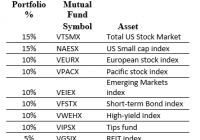Can India ETFs Continue To Soar After The Rate Cut?
The Indian stock market took giant strides last year gaining about 30% on optimism that the much-anticipated win of the pro-growth government would drive Asia’s third-largest economy higher. After all, the euphoria around one of the members of the BRIC nations was justified when investors saw robust corporate earnings, a drastic decline in inflation helped by the unbelievable decline in global oil prices and a stable currency despite the ascent of the greenback. All these tailwinds set the stage for the Indian central bank to go for the much-awaited rate cut on Thursday, Jan 15, by 25 basis points to 7.75%. The move, was prompted by consumer prices below the Reserve Bank of India’s ( RBI ) target for the third month in a row. RBI governor Raghuram Rajan also sounded hopeful that inflation might remain below 6% until January 2016. Though India’s inflation rate nudged up to 5% in December 2014 from a record-low of 4.38% in the earlier month, the number was way behind the average 8.98% noticed from 2012 until 2014 (per tradingeconomics). In fact, the number even touched the high of 11.16% in November 2013, compelling a cycle of rate hikes in the past one-and-half years that India had to undergo in order to contain rising prices. What’s Behind the Falling Inflation? India’s present economic background, created on both domestic and international parameters, is in one word – satisfactory. While a drastic slump in oil price caught the global stock market on the wrong foot, it came as a boon to the Indian economy. This was because India imports more than 75% of its oil requirements, thus being highly susceptible to oil prices. Per U.S. Energy Information Administration, India was the world’s fourth-biggest user of crude oil and petroleum products in 2013. Last June, Financial Times indicated that the Barclays’ projected $10 per barrel rise in crude oil price would cost India 0.5 percentage points in its growth rate. When the oil price moved in the opposite direction, the scene turned around as well. And now, with several research houses projecting oil prices to remain around $40 per barrel in the first half of 2015, Indian foreign reserves paired with policy makers have every reason to cheer. This in turn is easing pressure on India’s currency, that too at a crucial time like this when the greenback is soaring higher and might gain more strength after the inevitable Fed rate hike. Market Impact India’s benchmark stock index rose the most in eight months following the rate cut announcement. No doubt the latest rate cut and a host of transformational measures including coal reforms, opening up the road for 100% FDI in railway infrastructure and easing FDI policies in construction, defense and insurance will provide a good boost to investors’ sentiments. As a result, India ETFs are poised to surge in the coming days on this surprise rate cut. Investors should note that almost all India ETFs are Buy-rated at the current level. Below are three funds that could strengthen investors’ portfolio with enhanced returns. These products have generated excellent returns over the trailing one-year period and are off to a good start in 2015 as well. WisdomTree India Earnings ETF (NYSEARCA: EPI ) This product tracks the WisdomTree India Earnings Index, holding 230 securities in its basket. The fund measures the performance of the profitable Indian companies. As we all know, a rate cut should spur corporate India, EPI should make a wise investment proposition in the coming weeks. About one-fourth of the portfolio is dominated by financials, followed by energy (18.70%) and information technology (17.94%). EPI is the largest and most popular ETF targeting India with AUM of over $2.1 billion and average trading volume of around 4.5 million shares. The expense ratio comes in at 0.83% for this product. The fund was up 31.7% over the past one year and has added about 6.7% so far this year. The fund has a Zacks ETF Rank #1 (Strong Buy) with High risk outlook. iShares S&P India Nifty Fifty Index ETF (NASDAQ: INDY ) INDY is a large cap centric fund that follows the CNX Nifty Index, which seeks to track the performance of the largest 50 Indian stocks. As the fund tracks the key Indian stock market gauge, it should be an eye-catcher for foreign investors. The ETF has amassed $778 million in assets. The fund charges 94 bps in fees. Banks take the top spot in the portfolio. This Zacks ETF Rank #1 (Strong Buy) fund was up nearly 32% in the last one year and 7.6% in the year-to-date frame. EGShares India Consumer ETF (NYSEARCA: INCO ) This ETF targets the consumer industry of India and follows the Indxx India Consumer Index. It holds 30 stocks in its basket and has amassed $27.1 million in its asset base. The fund trades in a paltry volume of 20,000 shares in an average day, suggesting additional cost in the form of a wide bid/ask spread beyond the expense ratio of 0.89%. As the name suggests, the product is focused on the consumer sector. From an industry look, automobiles, which perform better in low rate environment, occupy the top position with 37.5% share while personal goods and industrial engineering round off the next two places at 27.1% and 15.4%, respectively. This Zacks ETF Rank #1 fund was up 56% in the one-year frame and 12% in the year-to-date frame.
